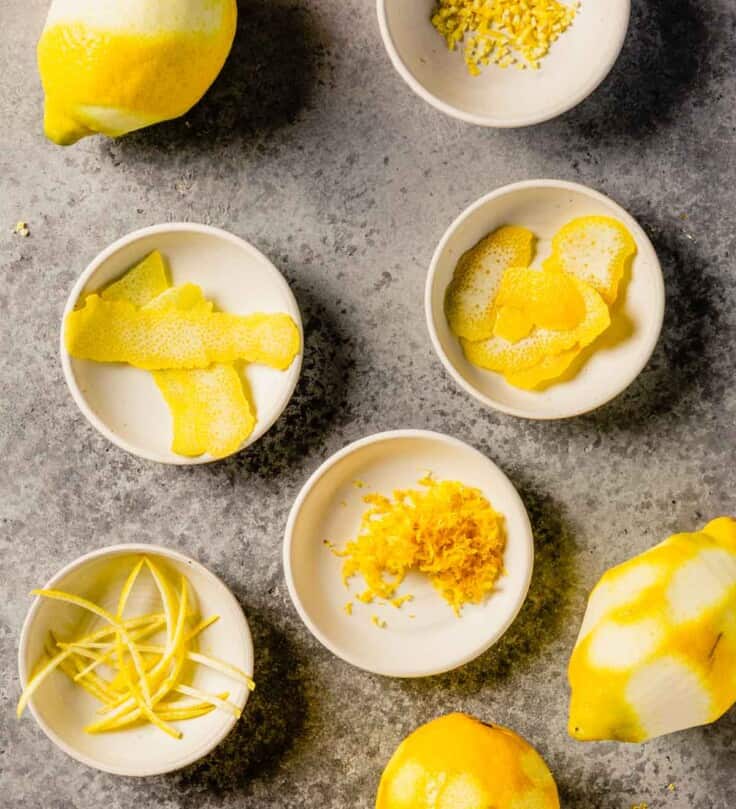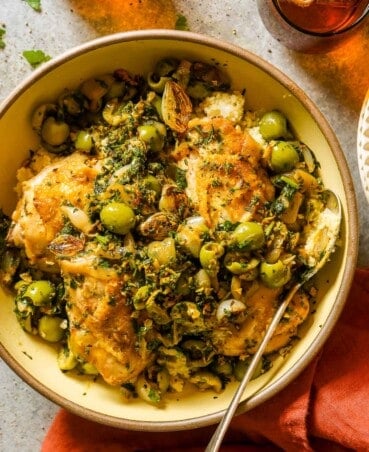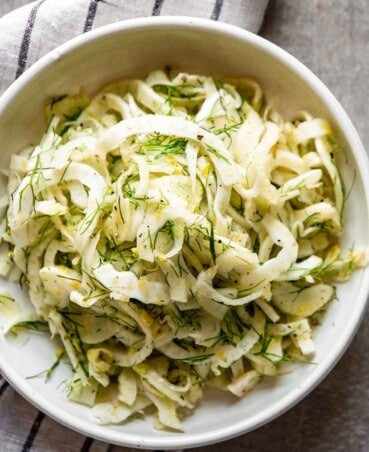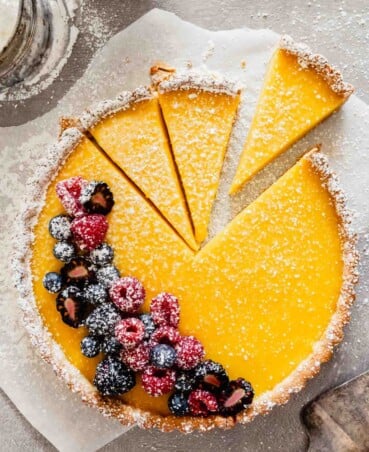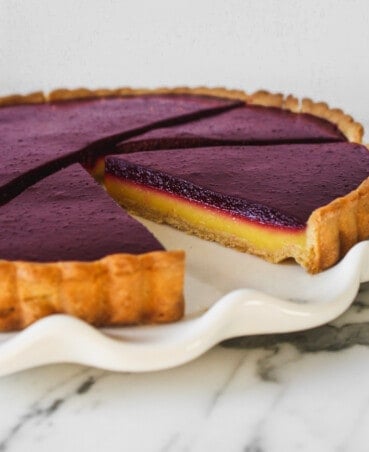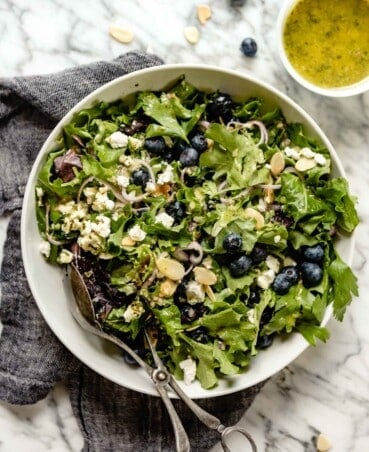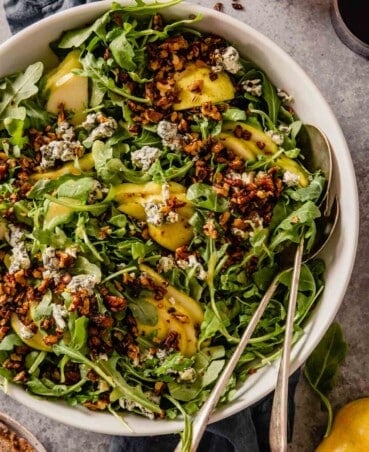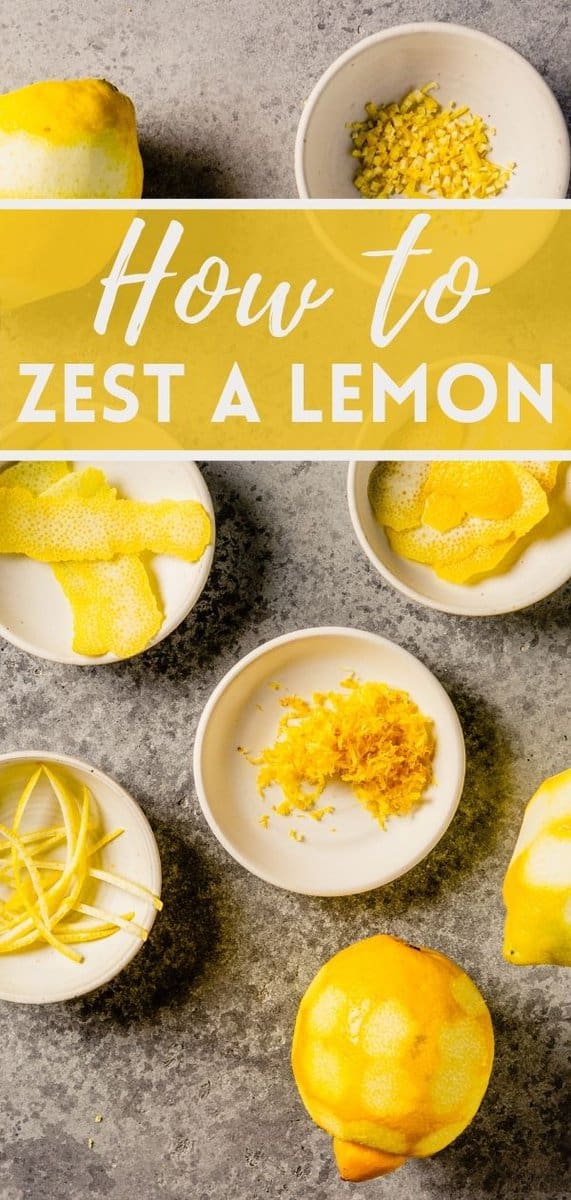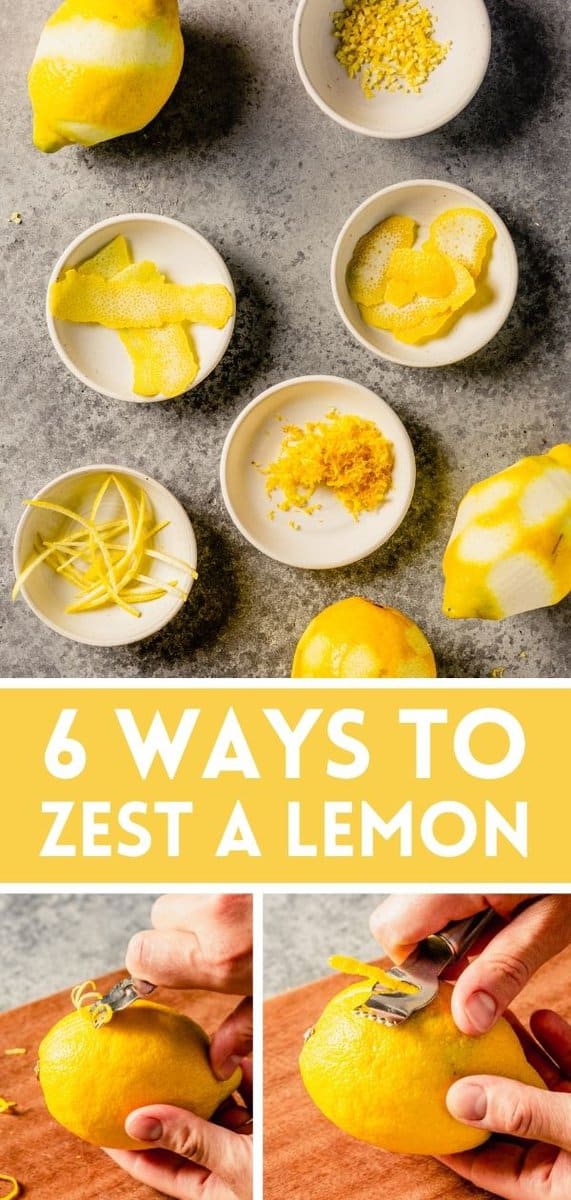Lemon zest is a great way to add vibrant flavor without overpowering a dish. There are many ways to zest a lemon—and lime and orange—and we’ll cover them all. I’ll walk you through the different methods and tools you can use to get lemon zest, and why it’s an essential ingredient in cooking.
Table of contents
What is Lemon Zest and Why Cook With It
Lemon zest is the yellow outside portion of the peel that adds a sweet citrus flavor to recipes. The key to honing in on all that sweet flavor is to avoid the pith—the white cottony layer. The pith itself isn’t bitter, but when cooked or combined with the bright yellow zest, it becomes bitter.
The peel of a lemon contains oils that add a bright, tangy flavor, but without the tart, acidic taste that comes from lemon juice. It is this sweet citrus flavor that is often desired to elevate many recipes.
Zest is a great way to incorporate a lot of citrusy flavor without adding extra liquid, which is especially important in baking recipes.
How to Zest a Lemon (6 Ways)
Using a Microplane
- Hold a microplane in one hand and place the other end on a cutting board, holding it at an angle.
- In your other hand, slide a lemon across the grates of the microplane avoiding the white pith flesh as you go. Rotate the lemon after each run across the microplane to get zest from all sides.
- This method creates finely grated pieces of zest.
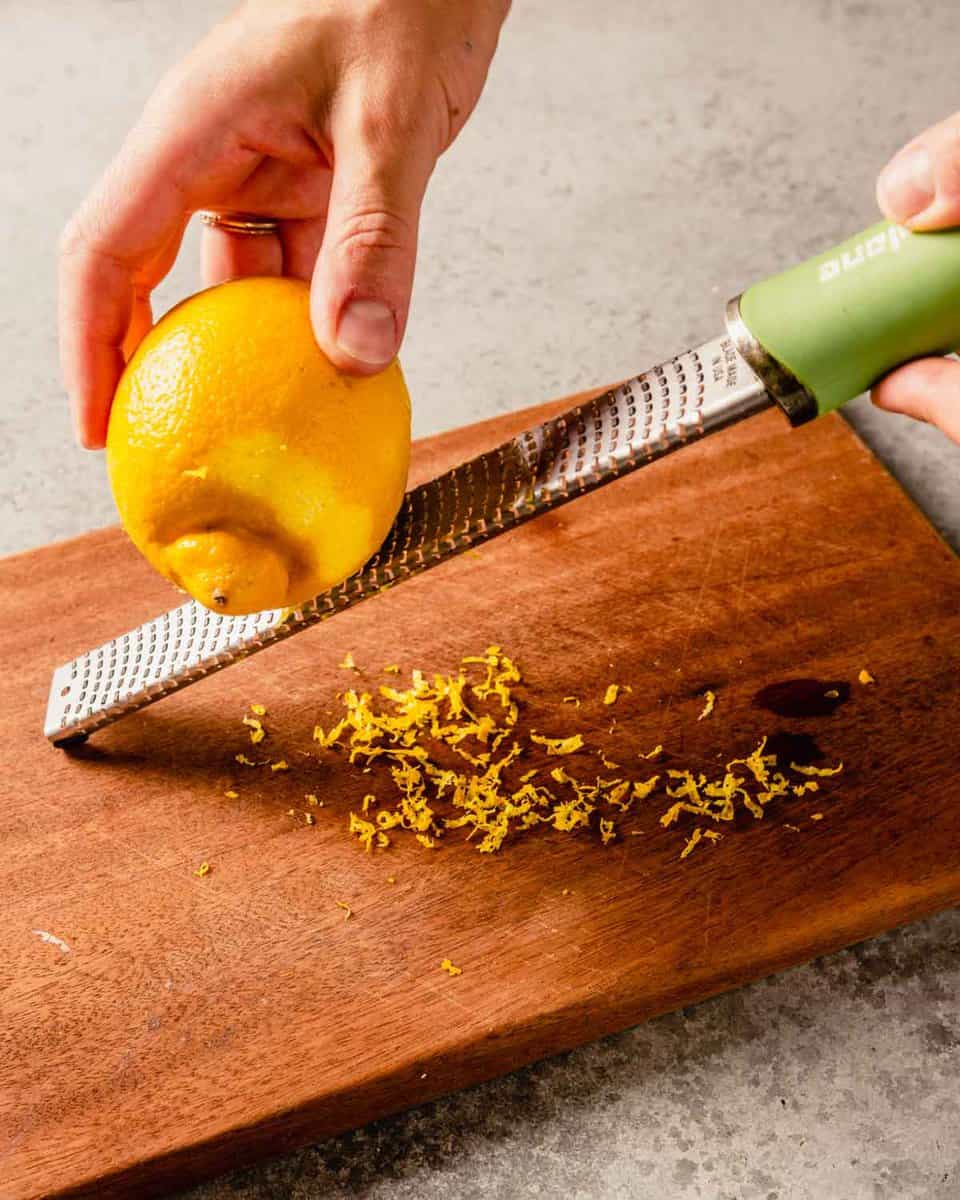
Using a Zester
- Applying pressure, drag the sharp edges of the zester across the fruit to create long strands of lemon zest.
I love this two-in-one channeling knife and zester.
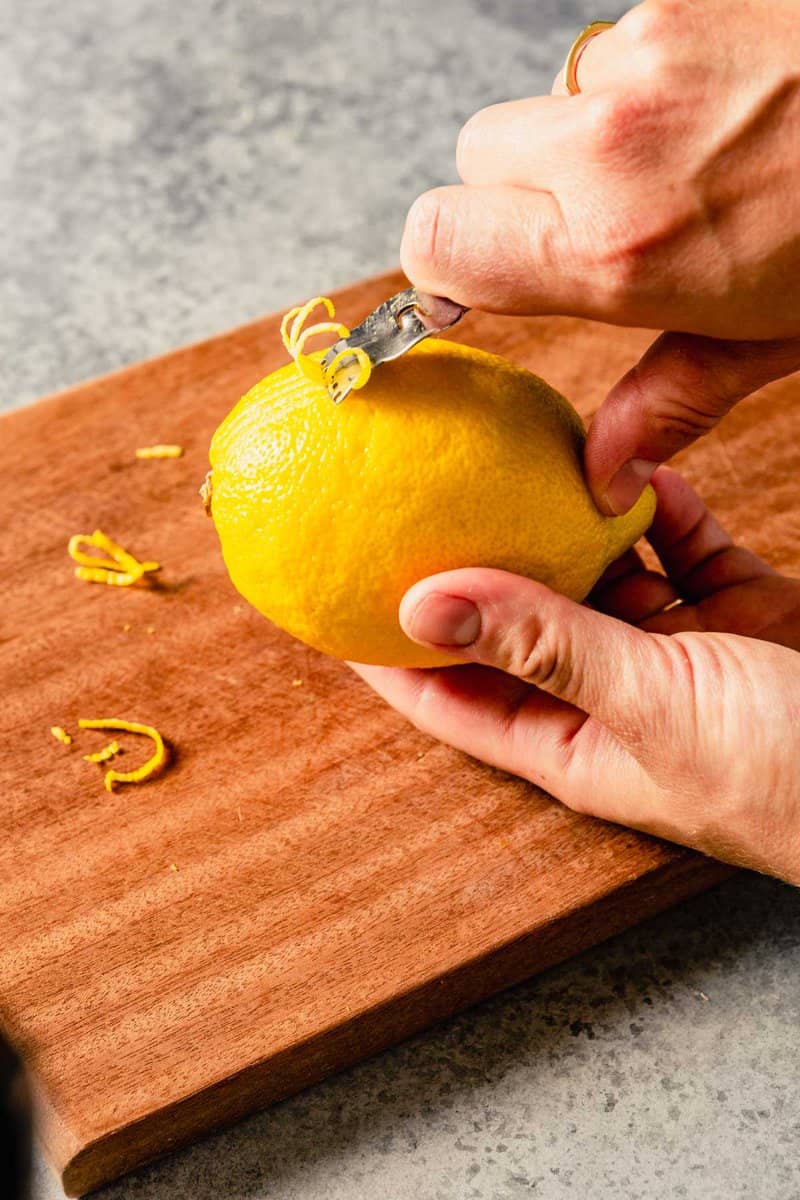
Using a Box Grater
- Hold a box grater in one hand and a lemon in the other.
- Slide the lemon over the finest holes on your box grater for small pieces of zest. Rotate the lemon after each run across the grate to get zest from all sides.
- This method creates finely grated pieces of zest.
Using a Vegetable Peeler
- Carefully position your vegetable peeler on a lemon and apply enough pressure to cut into the lemon peel, avoiding the pith.
- Slide the peeler across the fruit, removing large strips of lemon zest.
- For smaller pieces of zest, cut the zest into strips or smaller pieces.
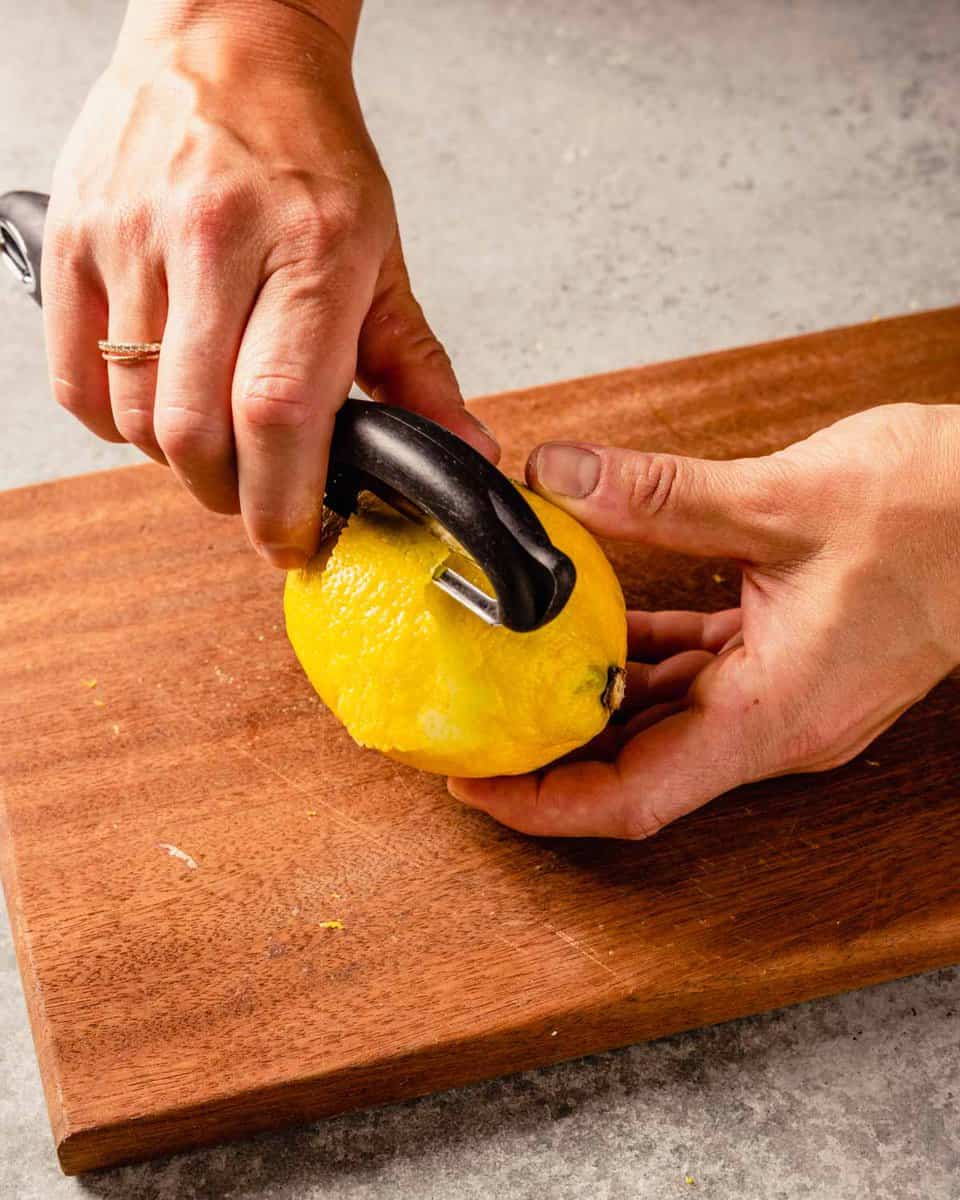
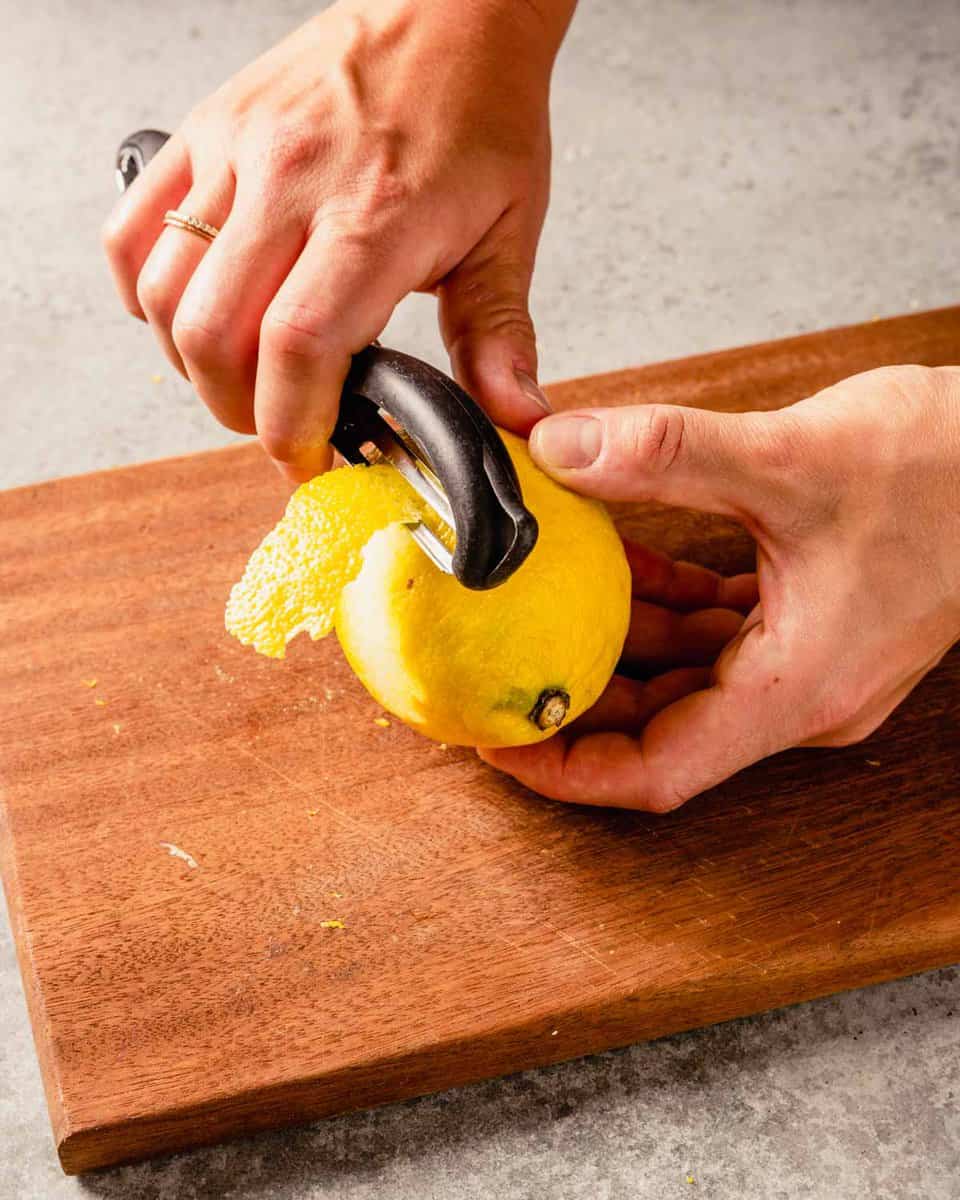
Using a Paring Knife
Need lemon zest for a recipe, but don’t have a grater handy? This method is great to keep in your back pocket.
- Using a sharp paring knife, carefully cut into the lemon peel and slide your knife around the lemon, twisting the fruit as you go and avoiding the pith.
- This method provides a large piece(s) of lemon peel. To get smaller pieces, simply cut the large piece of peel into smaller pieces.
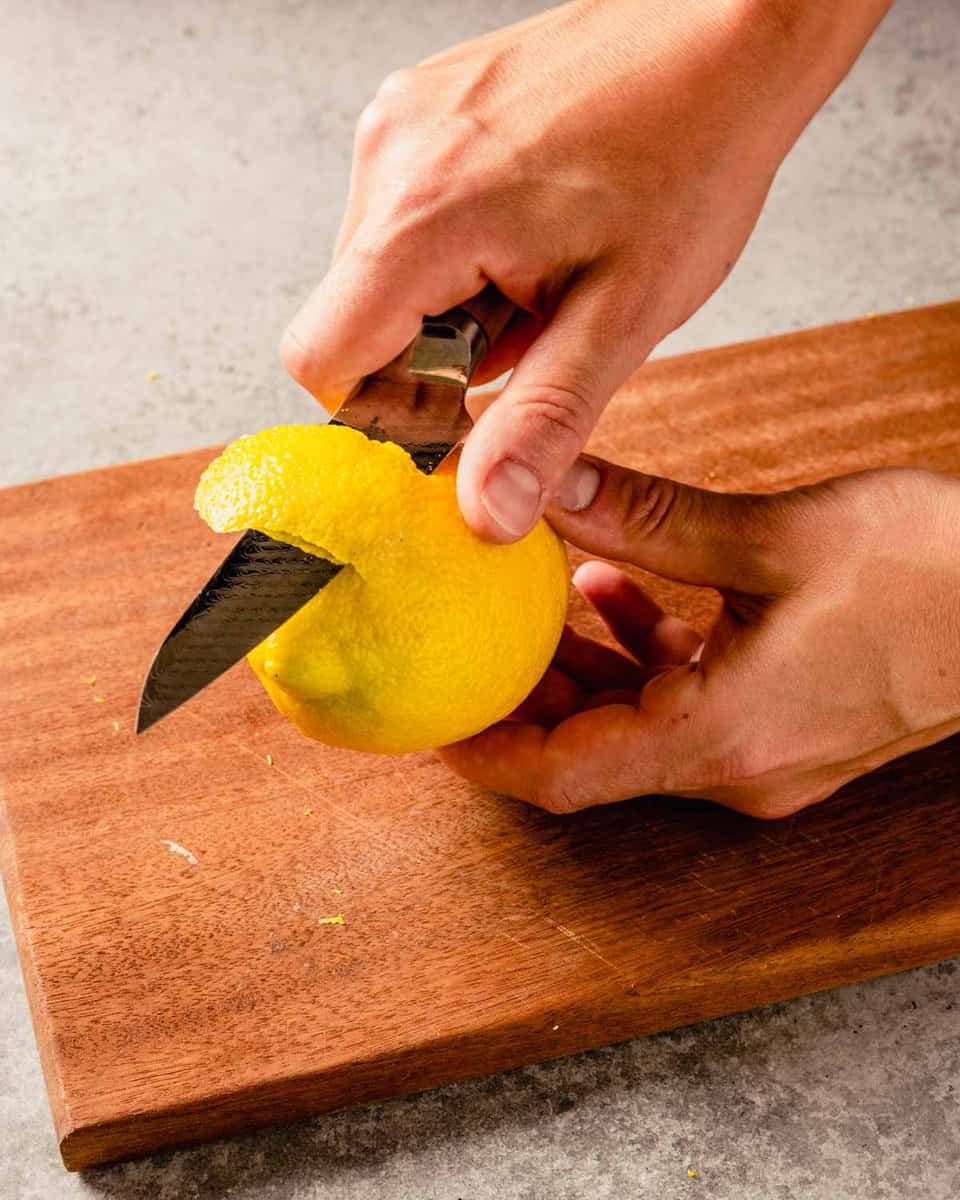
Using a Channeling Knife
- Hold your lemon in one hand and a channeling knife in the other.
- Gently dig the knife into the peel and rotate the lemon while continuously applying pressure to make a thin strip of peel.
- This method creates long strips of zest.
The two-in-one channeling knife and zester comes in handy again!
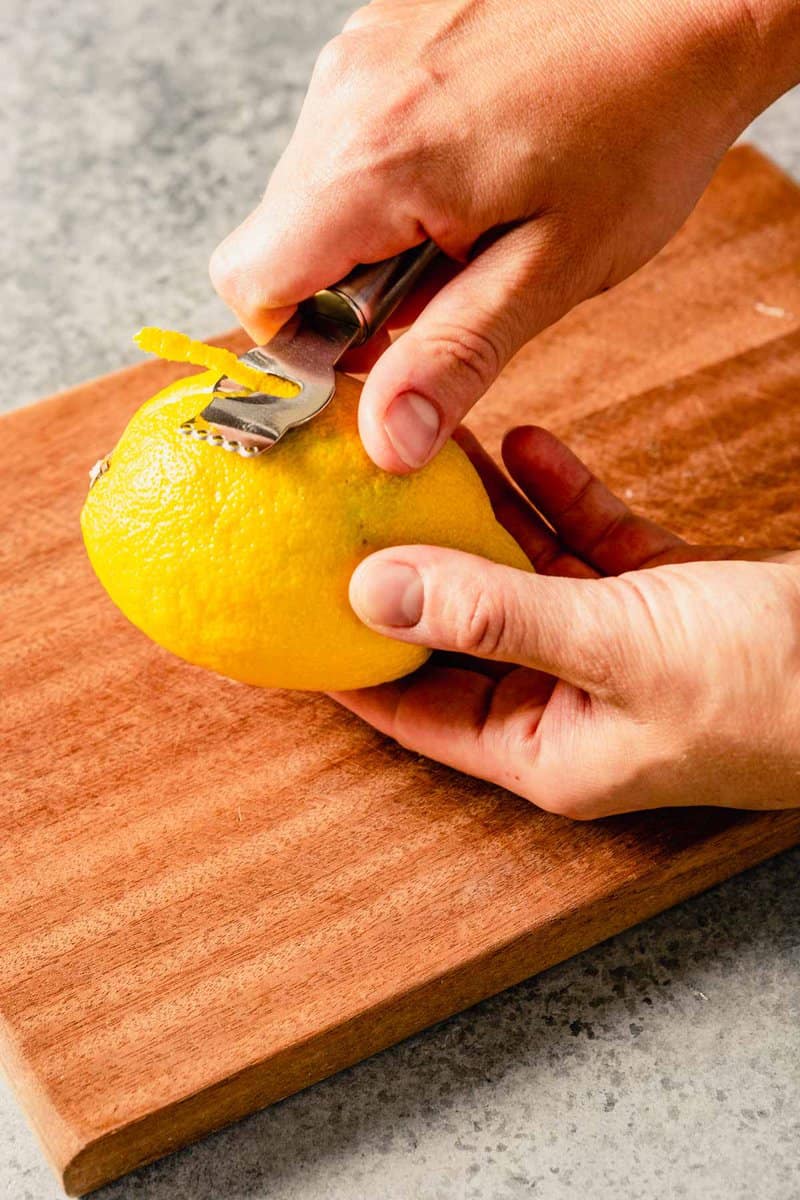
Tips for Zesting a Lemon
- It’s important to zest just the yellow zest—avoid zesting any of the white pith. The pith is very bitter and will overpowder the delicate citrus flavors.
- Just like any produce, lemons should be washed. So before you start zesting, rinse and dry the lemons! If you’re using a microplane to finely grate the zest, make sure you dry the lemon very well. If it’s still moist, the zest will clump instead of being nice and flaky.
How to Use Lemon Zest
Lemon zest is delicious in all kinds of cooking applications—salads, baking, braising, and more. Use fresh zest in a Lemon Dill Vinaigrette. Or add it to a fresh and simple Fennel Salad.
I also like to add lemon zest to Healthy Blueberry Muffins and my Olive Oil Cake.
Or try frying lemon zest—it infuses oil with a bright citrus flavor and creates a crunchy topping for the dish. I use this method in my Lentil Salad and my Martini Chicken.
Dinner
Martini Chicken
20-Minute Meals
Lemon Dill Salmon (Fast & Easy Dinner!)
Fruit Dessert
Lemon Curd Tart
How to Make a Lemon Twist
Want to impress your guests with a fancy garnish on their cocktail rim? Adding a lemon twist is a simple way to bring the “wow-factor”.
- Use a vegetable peeler and remove a three to four inch portion of lemon peel.
- Slice the lemon peel into strips by running a paring knife lengthwise down the peel.
- Twist the lemon peel around your finger or a straw to create a spiral.
- Garnish as desired (on the rim of a glass, dropped in a cocktail, to top a cake, etc.).
How to Store Lemon Zest
Store leftover zest in a resealable zipper-lock bag in the fridge for up to one week, or in the freezer for up to six months, though it’s best used within three weeks as the flavor starts to diminish thereafter.
An additional way to store citrus zest is to mix it into salt or sugar, naturally preserving the flavor and integrity, and using it around a cocktail rim, in baking, or to season poultry or fish.
